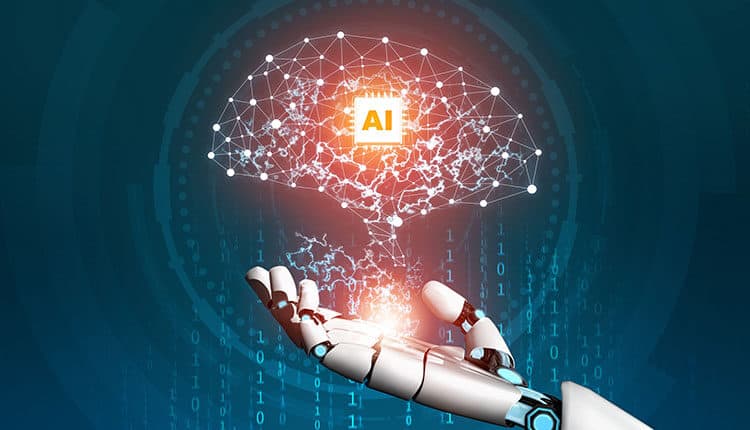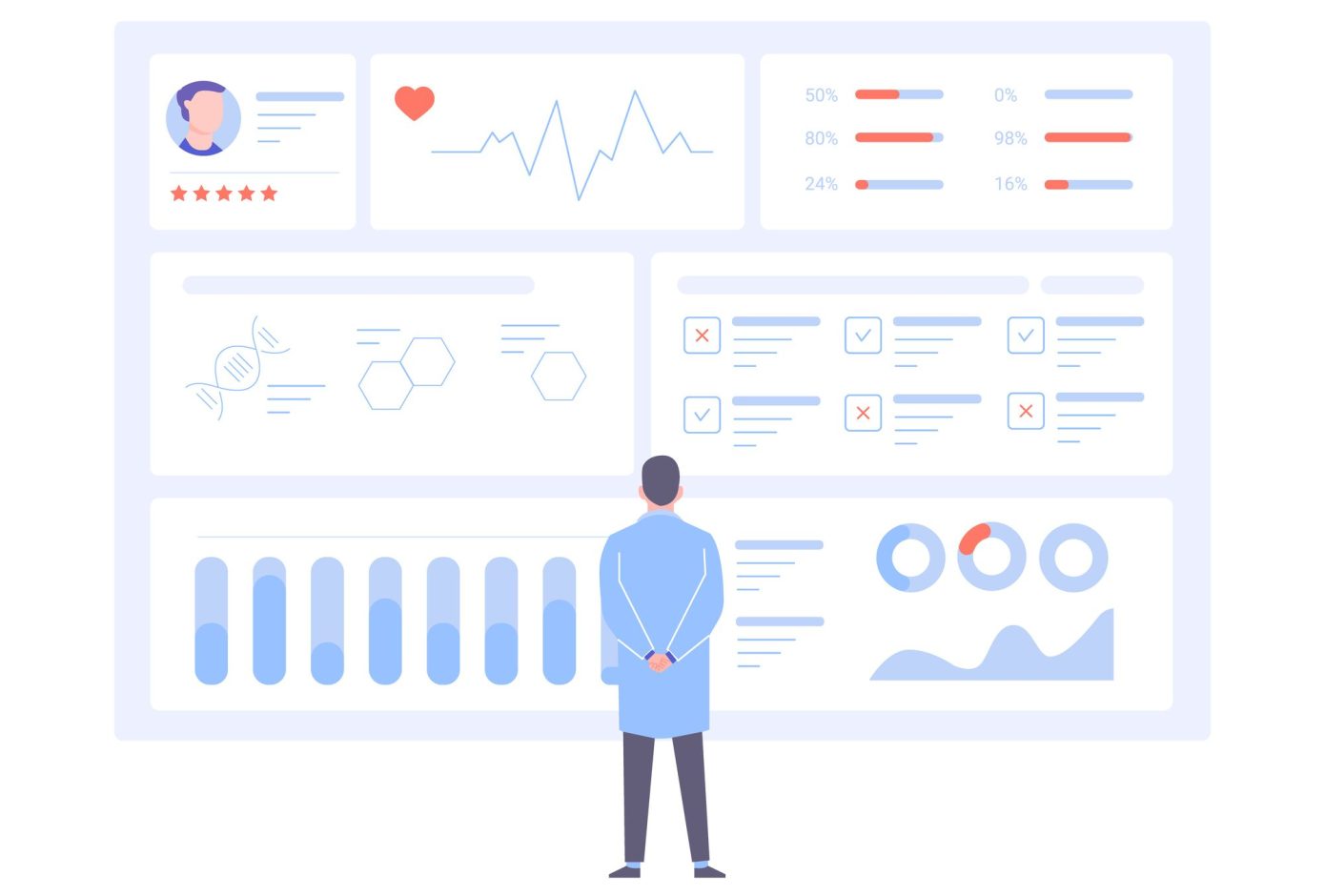Quote for the day:
“Our chief want is someone who will inspire us to be what we know we could be.” -- Ralph Waldo Emerson
AI in customer communication: the opportunities and risks SMBs can’t ignore
 To build consumer trust, businesses must demonstrate that AI genuinely improves
the customer experience, especially by enhancing the quality, relevance and
reliability of communication. With concerns around data misuse and inaccuracy,
businesses need to clearly explain how AI supports secure, accurate and
personalized interactions, not just internally but in ways customers can
understand and see. AI should be positioned as an enabler of human service,
taking care of routine tasks so employees can focus on complex, sensitive or
high-value customer needs. A key part of gaining long-term trust is
transparency around data. Businesses must clearly communicate how customer
information is handled securely and show that AI is being used responsibly and
with care. This could include clearly labelling AI-generated communications such
as emails or text messages, or proactively informing customers about what data
is being used and for what purpose. ... As conversations move beyond why
AI should be used to how it must be used responsibly and effectively, companies
have entered a make-or-break “audition phase” for AI. In customer
communications, businesses can no longer afford to just talk about AI’s
benefits, they must prove them by demonstrating how it enhances quality,
security, and personalization.
To build consumer trust, businesses must demonstrate that AI genuinely improves
the customer experience, especially by enhancing the quality, relevance and
reliability of communication. With concerns around data misuse and inaccuracy,
businesses need to clearly explain how AI supports secure, accurate and
personalized interactions, not just internally but in ways customers can
understand and see. AI should be positioned as an enabler of human service,
taking care of routine tasks so employees can focus on complex, sensitive or
high-value customer needs. A key part of gaining long-term trust is
transparency around data. Businesses must clearly communicate how customer
information is handled securely and show that AI is being used responsibly and
with care. This could include clearly labelling AI-generated communications such
as emails or text messages, or proactively informing customers about what data
is being used and for what purpose. ... As conversations move beyond why
AI should be used to how it must be used responsibly and effectively, companies
have entered a make-or-break “audition phase” for AI. In customer
communications, businesses can no longer afford to just talk about AI’s
benefits, they must prove them by demonstrating how it enhances quality,
security, and personalization.The Expiring Trust Model: CISOs Must Rethink PKI in the Era of Short-Lived Certificates and Machine Identity
 While the risk associated with certificates applies to all companies, it is a
greater challenge for businesses operating in regulated sectors such as
healthcare, where certificates must often be tied to national digital identity
systems. In several countries, healthcare providers and services are now
required to issue certificates bound to a National Health Identifier (NHI).
These certificates are used for authentication, e-signature and encryption in
health data exchanges and must adhere to complex issuance workflows, usage
constraints and revocation processes mandated by government frameworks. Managing
these certificates alongside public TLS certificates introduces operational
complexity that few legacy PKI solutions were designed to handle in today’s
dynamic and cloud-native environments. ... The urgency of this mandate is
heightened by the impending cryptographic shift driven by the rise of quantum
computing. Transitioning to post-quantum cryptography (PQC) will require
organizations to implement new algorithms quickly and securely. Frequent
certificate renewal cycles, which once seemed a burden, could now become a
strategic advantage. When managed through automated and agile certificate
lifecycle management, these renewals provide the flexibility to rapidly replace
compromised keys, rotate certificate authorities or deploy quantum-safe
algorithms as they become standardized.
While the risk associated with certificates applies to all companies, it is a
greater challenge for businesses operating in regulated sectors such as
healthcare, where certificates must often be tied to national digital identity
systems. In several countries, healthcare providers and services are now
required to issue certificates bound to a National Health Identifier (NHI).
These certificates are used for authentication, e-signature and encryption in
health data exchanges and must adhere to complex issuance workflows, usage
constraints and revocation processes mandated by government frameworks. Managing
these certificates alongside public TLS certificates introduces operational
complexity that few legacy PKI solutions were designed to handle in today’s
dynamic and cloud-native environments. ... The urgency of this mandate is
heightened by the impending cryptographic shift driven by the rise of quantum
computing. Transitioning to post-quantum cryptography (PQC) will require
organizations to implement new algorithms quickly and securely. Frequent
certificate renewal cycles, which once seemed a burden, could now become a
strategic advantage. When managed through automated and agile certificate
lifecycle management, these renewals provide the flexibility to rapidly replace
compromised keys, rotate certificate authorities or deploy quantum-safe
algorithms as they become standardized.The CISO code of conduct: Ditch the ego, lead for real
 The problem doesn’t stop at vendor interactions. It shows up inside their
teams, too. Many CISOs don’t build leadership pipelines; they build echo
chambers. They hire people who won’t challenge them. They micromanage
strategy. They hoard influence. And they act surprised when innovation dries
up or when great people leave. As Jadee Hanson, CISO at Vanta, put it, “Ego
builds walls. True leadership builds trust. The best CISOs know the
difference.” That distinction matters, especially when your team’s success
depends on your ability to listen, adapt, and share the stage. ... Security
isn’t just a technical function anymore. It’s a leadership discipline. And
that means we need more than frameworks and certifications; we need a shared
understanding of how CISOs should show up. Internally, externally, in
boardrooms, and in the broader community. That’s why I’m publishing this. Not
because I have all the answers, but because the profession needs a new
baseline. A new set of expectations. A standard we can hold ourselves, and
each other, to. Not about compliance. About conduct. About how we lead. What
follows is the CISO Code of Conduct. It’s not a checklist, but a mindset. If
you recognize yourself in it, good. If you don’t, maybe it’s time to ask why.
Either way, this is the bar. Let’s hold it. ... A lot of people in this space
are trying to do the right thing. But there are also a lot of people hiding
behind a title.
The problem doesn’t stop at vendor interactions. It shows up inside their
teams, too. Many CISOs don’t build leadership pipelines; they build echo
chambers. They hire people who won’t challenge them. They micromanage
strategy. They hoard influence. And they act surprised when innovation dries
up or when great people leave. As Jadee Hanson, CISO at Vanta, put it, “Ego
builds walls. True leadership builds trust. The best CISOs know the
difference.” That distinction matters, especially when your team’s success
depends on your ability to listen, adapt, and share the stage. ... Security
isn’t just a technical function anymore. It’s a leadership discipline. And
that means we need more than frameworks and certifications; we need a shared
understanding of how CISOs should show up. Internally, externally, in
boardrooms, and in the broader community. That’s why I’m publishing this. Not
because I have all the answers, but because the profession needs a new
baseline. A new set of expectations. A standard we can hold ourselves, and
each other, to. Not about compliance. About conduct. About how we lead. What
follows is the CISO Code of Conduct. It’s not a checklist, but a mindset. If
you recognize yourself in it, good. If you don’t, maybe it’s time to ask why.
Either way, this is the bar. Let’s hold it. ... A lot of people in this space
are trying to do the right thing. But there are also a lot of people hiding
behind a title.Phishing simulations: What works and what doesn’t
 Researchers conducted a study on the real-world effectiveness of common
phishing training methods. They found that the absolute difference in failure
rates between trained and untrained users was small across various types of
training content. However, we should take this with caution, as the study was
conducted within a single healthcare organization and focused only on click
rates as the measure of success or failure. It doesn’t capture the full
picture. Matt Linton, Google’s security manager, said phishing tests are
outdated and often cause more frustration among employees than actually
improving their security habits. ... For any training program to work, you
first need to understand your organization’s risk. Which employees are most at
risk? What do they already know about phishing? Next, work closely with your
IT or security teams to create phishing tests that match current threats. Tell
employees what to expect. Explain why these tests matter and how they help
stop problems. Don’t play the blame game. If someone fails a test, treat it as
a chance to learn, not to punish. When you do this, employees are less likely
to hide mistakes or avoid reporting phishing emails. When picking a vendor,
focus on content and realistic simulations. The system should be easy to use
and provide helpful reports.
Researchers conducted a study on the real-world effectiveness of common
phishing training methods. They found that the absolute difference in failure
rates between trained and untrained users was small across various types of
training content. However, we should take this with caution, as the study was
conducted within a single healthcare organization and focused only on click
rates as the measure of success or failure. It doesn’t capture the full
picture. Matt Linton, Google’s security manager, said phishing tests are
outdated and often cause more frustration among employees than actually
improving their security habits. ... For any training program to work, you
first need to understand your organization’s risk. Which employees are most at
risk? What do they already know about phishing? Next, work closely with your
IT or security teams to create phishing tests that match current threats. Tell
employees what to expect. Explain why these tests matter and how they help
stop problems. Don’t play the blame game. If someone fails a test, treat it as
a chance to learn, not to punish. When you do this, employees are less likely
to hide mistakes or avoid reporting phishing emails. When picking a vendor,
focus on content and realistic simulations. The system should be easy to use
and provide helpful reports.Reclaiming Control: How Enterprises Can Fix Broken Security Operations
 Asset management is critical to the success of the security operations function.
In order to properly defend assets, I first and foremost need to know about them
and be able to manage them. This includes applying policies, controls, and being
able to identify assets and their locations when necessary, of course. With the
move to hybrid and multi-cloud, asset management is much more difficult than it
used to be. ... Visibility enables another key component of security operations
– telemetry collection. Without the proper logging, eventing, and alerting, I
can’t detect, investigate, analyze, respond to, and mitigate security incidents.
Security operations simply cannot operate without telemetry, and the hybrid and
multi-cloud world has made telemetry collection much more difficult than it used
to be. ... If a security incident is serious enough, there will need to be a
formal incident response. This will involve significant planning, coordination
with a variety of stakeholders, regular communications, structured reporting,
ongoing analysis, and a post-incident evaluation once the response is wrapped
up. All of these steps are complicated by hybrid and multi-cloud environments,
if not made impossible altogether. The security operations team will not be able
to properly engage in incident response if they are lacking the above
capabilities, and having a complex environment is not an excuse.
Asset management is critical to the success of the security operations function.
In order to properly defend assets, I first and foremost need to know about them
and be able to manage them. This includes applying policies, controls, and being
able to identify assets and their locations when necessary, of course. With the
move to hybrid and multi-cloud, asset management is much more difficult than it
used to be. ... Visibility enables another key component of security operations
– telemetry collection. Without the proper logging, eventing, and alerting, I
can’t detect, investigate, analyze, respond to, and mitigate security incidents.
Security operations simply cannot operate without telemetry, and the hybrid and
multi-cloud world has made telemetry collection much more difficult than it used
to be. ... If a security incident is serious enough, there will need to be a
formal incident response. This will involve significant planning, coordination
with a variety of stakeholders, regular communications, structured reporting,
ongoing analysis, and a post-incident evaluation once the response is wrapped
up. All of these steps are complicated by hybrid and multi-cloud environments,
if not made impossible altogether. The security operations team will not be able
to properly engage in incident response if they are lacking the above
capabilities, and having a complex environment is not an excuse.
Legacy No More: How Generative AI is Powering the Next Wave of Application Modernization in India
 Choosing the right approach to modernise your legacy systems is a task.
Generative AI helps overcome the challenges faced in legacy systems and
accelerates modernization. For example, it can be used to understand how legacy
systems function through detailed business requirements. The resulting documents
can be used to build new systems on the cloud in the second phase. This can make
the process cheaper, too, and thus easier to get business cases approved.
Additionally, generative AI can help create training documents for the current
system if the organization wants to continue using its mainframes. In one
example, generative AI might turn business models into microservices, API
contracts, and database schemas ready for cloud-native inclusion. ... You need
to have a holistic assessment of your existing system to implement generative AI
effectively. Leaders must assess obsolete modules, interdependencies, data
schemas, and throughput constraints to pinpoint high-impact targets and
establish concrete modernization goals. Revamping legacy applications with
generative AI starts with a clear understanding of the existing system.
Organizations must conduct a thorough evaluation, mapping performance
bottlenecks, obsolete modules, entanglements, and intricacies of the data flow,
to create a modernization roadmap.
Choosing the right approach to modernise your legacy systems is a task.
Generative AI helps overcome the challenges faced in legacy systems and
accelerates modernization. For example, it can be used to understand how legacy
systems function through detailed business requirements. The resulting documents
can be used to build new systems on the cloud in the second phase. This can make
the process cheaper, too, and thus easier to get business cases approved.
Additionally, generative AI can help create training documents for the current
system if the organization wants to continue using its mainframes. In one
example, generative AI might turn business models into microservices, API
contracts, and database schemas ready for cloud-native inclusion. ... You need
to have a holistic assessment of your existing system to implement generative AI
effectively. Leaders must assess obsolete modules, interdependencies, data
schemas, and throughput constraints to pinpoint high-impact targets and
establish concrete modernization goals. Revamping legacy applications with
generative AI starts with a clear understanding of the existing system.
Organizations must conduct a thorough evaluation, mapping performance
bottlenecks, obsolete modules, entanglements, and intricacies of the data flow,
to create a modernization roadmap.
A Changing of the Guard in DevOps
 Asimov, a newcomer in the space, is taking a novel approach — but addressing a
challenge that’s as old as DevOps itself. According to the article, the team
behind Asimov has zeroed in on a major time sink for developers: The cognitive
load of understanding deployment environments and platform intricacies. ... What
makes Asimov stand out is not just its AI capability but its user-centric focus.
This isn’t another auto-coder. This is about easing the mental burden, helping
engineers think less about YAML files and more about solving business problems.
It’s a fresh coat of paint on a house we’ve been renovating for over a decade.
... Whether it’s a new player like Asimov or stalwarts like GitLab and Harness,
the pattern is clear: AI is being applied to the same fundamental problems that
have shaped DevOps from the beginning. The goals haven’t changed — faster
cycles, fewer errors, happier teams — but the tools are evolving. Sure, there’s
some real innovation here. Asimov’s knowledge-centric approach feels genuinely
new. GitLab’s AI agents offer a logical evolution of their existing ecosystem.
Harness’s plain-language chat interface lowers the barrier to entry. These
aren’t just gimmicks. But the bigger story is the convergence. AI is no longer
an outlier or an optional add-on — it’s becoming foundational. And as these
solutions mature, we’re likely to see less hype and more impact.
Asimov, a newcomer in the space, is taking a novel approach — but addressing a
challenge that’s as old as DevOps itself. According to the article, the team
behind Asimov has zeroed in on a major time sink for developers: The cognitive
load of understanding deployment environments and platform intricacies. ... What
makes Asimov stand out is not just its AI capability but its user-centric focus.
This isn’t another auto-coder. This is about easing the mental burden, helping
engineers think less about YAML files and more about solving business problems.
It’s a fresh coat of paint on a house we’ve been renovating for over a decade.
... Whether it’s a new player like Asimov or stalwarts like GitLab and Harness,
the pattern is clear: AI is being applied to the same fundamental problems that
have shaped DevOps from the beginning. The goals haven’t changed — faster
cycles, fewer errors, happier teams — but the tools are evolving. Sure, there’s
some real innovation here. Asimov’s knowledge-centric approach feels genuinely
new. GitLab’s AI agents offer a logical evolution of their existing ecosystem.
Harness’s plain-language chat interface lowers the barrier to entry. These
aren’t just gimmicks. But the bigger story is the convergence. AI is no longer
an outlier or an optional add-on — it’s becoming foundational. And as these
solutions mature, we’re likely to see less hype and more impact.
Data Protection vs. Cyber Resilience: Mastering Both in a Complex IT Landscape
 Traditional disaster recovery (DR) approaches designed for catastrophic events
and natural disasters are still necessary today, but companies must implement a
more security-event-oriented approach on top of that. Legacy approaches to
disaster recovery are insufficient in an environment that is rife with
cyberthreats as these approaches focus on infrastructure, neglecting
application-level dependencies and validation processes. Further, threat actors
have moved beyond interrupting services and now target data to poison, encrypt
or exfiltrate it. ... Cyber resilience is now essential. With ransomware that
can encrypt systems in minutes, the ability to recover quickly and effectively
is a business imperative. Therefore, companies must develop an adaptive, layered
strategy that evolves with emerging threats and aligns with their unique
environment, infrastructure and risk tolerance. To effectively prepare for the
next threat, technology leaders must balance technical sophistication with
operational discipline as the best defence is not solely a hardened perimeter,
it’s also having a recovery plan that works. Today, companies cannot afford to
choose between data protection and cyber resilience, they must master both.
Traditional disaster recovery (DR) approaches designed for catastrophic events
and natural disasters are still necessary today, but companies must implement a
more security-event-oriented approach on top of that. Legacy approaches to
disaster recovery are insufficient in an environment that is rife with
cyberthreats as these approaches focus on infrastructure, neglecting
application-level dependencies and validation processes. Further, threat actors
have moved beyond interrupting services and now target data to poison, encrypt
or exfiltrate it. ... Cyber resilience is now essential. With ransomware that
can encrypt systems in minutes, the ability to recover quickly and effectively
is a business imperative. Therefore, companies must develop an adaptive, layered
strategy that evolves with emerging threats and aligns with their unique
environment, infrastructure and risk tolerance. To effectively prepare for the
next threat, technology leaders must balance technical sophistication with
operational discipline as the best defence is not solely a hardened perimeter,
it’s also having a recovery plan that works. Today, companies cannot afford to
choose between data protection and cyber resilience, they must master both.
Anthropic researchers discover the weird AI problem: Why thinking longer makes models dumber
 The findings challenge the prevailing industry wisdom that more computational
resources devoted to reasoning will consistently improve AI performance. Major
AI companies have invested heavily in “test-time compute” — allowing models more
processing time to work through complex problems — as a key strategy for
enhancing capabilities. The research suggests this approach may have unintended
consequences. “While test-time compute scaling remains promising for improving
model capabilities, it may inadvertently reinforce problematic reasoning
patterns,” the authors conclude. For enterprise decision-makers, the
implications are significant. Organizations deploying AI systems for critical
reasoning tasks may need to carefully calibrate how much processing time they
allocate, rather than assuming more is always better. ... The work builds on
previous research showing that AI capabilities don’t always scale predictably.
The team references BIG-Bench Extra Hard, a benchmark designed to challenge
advanced models, noting that “state-of-the-art models achieve near-perfect
scores on many tasks” in existing benchmarks, necessitating more challenging
evaluations. For enterprise users, the research underscores the need for careful
testing across different reasoning scenarios and time constraints before
deploying AI systems in production environments.
The findings challenge the prevailing industry wisdom that more computational
resources devoted to reasoning will consistently improve AI performance. Major
AI companies have invested heavily in “test-time compute” — allowing models more
processing time to work through complex problems — as a key strategy for
enhancing capabilities. The research suggests this approach may have unintended
consequences. “While test-time compute scaling remains promising for improving
model capabilities, it may inadvertently reinforce problematic reasoning
patterns,” the authors conclude. For enterprise decision-makers, the
implications are significant. Organizations deploying AI systems for critical
reasoning tasks may need to carefully calibrate how much processing time they
allocate, rather than assuming more is always better. ... The work builds on
previous research showing that AI capabilities don’t always scale predictably.
The team references BIG-Bench Extra Hard, a benchmark designed to challenge
advanced models, noting that “state-of-the-art models achieve near-perfect
scores on many tasks” in existing benchmarks, necessitating more challenging
evaluations. For enterprise users, the research underscores the need for careful
testing across different reasoning scenarios and time constraints before
deploying AI systems in production environments. How to Advance from SOC Manager to CISO?
 Strategic thinking demands a firm grip on the organization's core operations,
particularly how it generates revenue and its key value streams. This
perspective allows security professionals to align their efforts with business
objectives, rather than operating in isolation. ... This is related to strategic
thinking but emphasizes knowledge of risk management and finance. Security
leaders must factor in financial impacts to justify security investments and
manage risks effectively. Balancing security measures with user experience and
system availability is another critical aspect. If security policies are too
strict, productivity can suffer; if they're too permissive, the company can be
exposed to threats. ... Effective communication is vital for translating
technical details into language senior stakeholders can grasp and act upon. This
means avoiding jargon and abbreviations to convey information in a simplistic
manner that resonates with multiple stakeholders, including executives who may
not have a deep technical background. Communicating the impact of security
initiatives in clear, concise language ensures decisions are well-informed and
support company goals. ... You will have to ensure technical services meet
business requirements, particularly in managing service delivery, implementing
change, and resolving issues. All of this is essential for a secure and
efficient IT infrastructure.
Strategic thinking demands a firm grip on the organization's core operations,
particularly how it generates revenue and its key value streams. This
perspective allows security professionals to align their efforts with business
objectives, rather than operating in isolation. ... This is related to strategic
thinking but emphasizes knowledge of risk management and finance. Security
leaders must factor in financial impacts to justify security investments and
manage risks effectively. Balancing security measures with user experience and
system availability is another critical aspect. If security policies are too
strict, productivity can suffer; if they're too permissive, the company can be
exposed to threats. ... Effective communication is vital for translating
technical details into language senior stakeholders can grasp and act upon. This
means avoiding jargon and abbreviations to convey information in a simplistic
manner that resonates with multiple stakeholders, including executives who may
not have a deep technical background. Communicating the impact of security
initiatives in clear, concise language ensures decisions are well-informed and
support company goals. ... You will have to ensure technical services meet
business requirements, particularly in managing service delivery, implementing
change, and resolving issues. All of this is essential for a secure and
efficient IT infrastructure.




/articles/complex-applications-storage-constraints/en/smallimage/compex-applications-storage-constraints-thumbnail-1747126977374.jpg)
















/presentations/architecture-green-software/en/slides/Sara-1735037626770.jpg)


.jpg?width=850&auto=webp&quality=95&format=jpg&disable=upscale)














